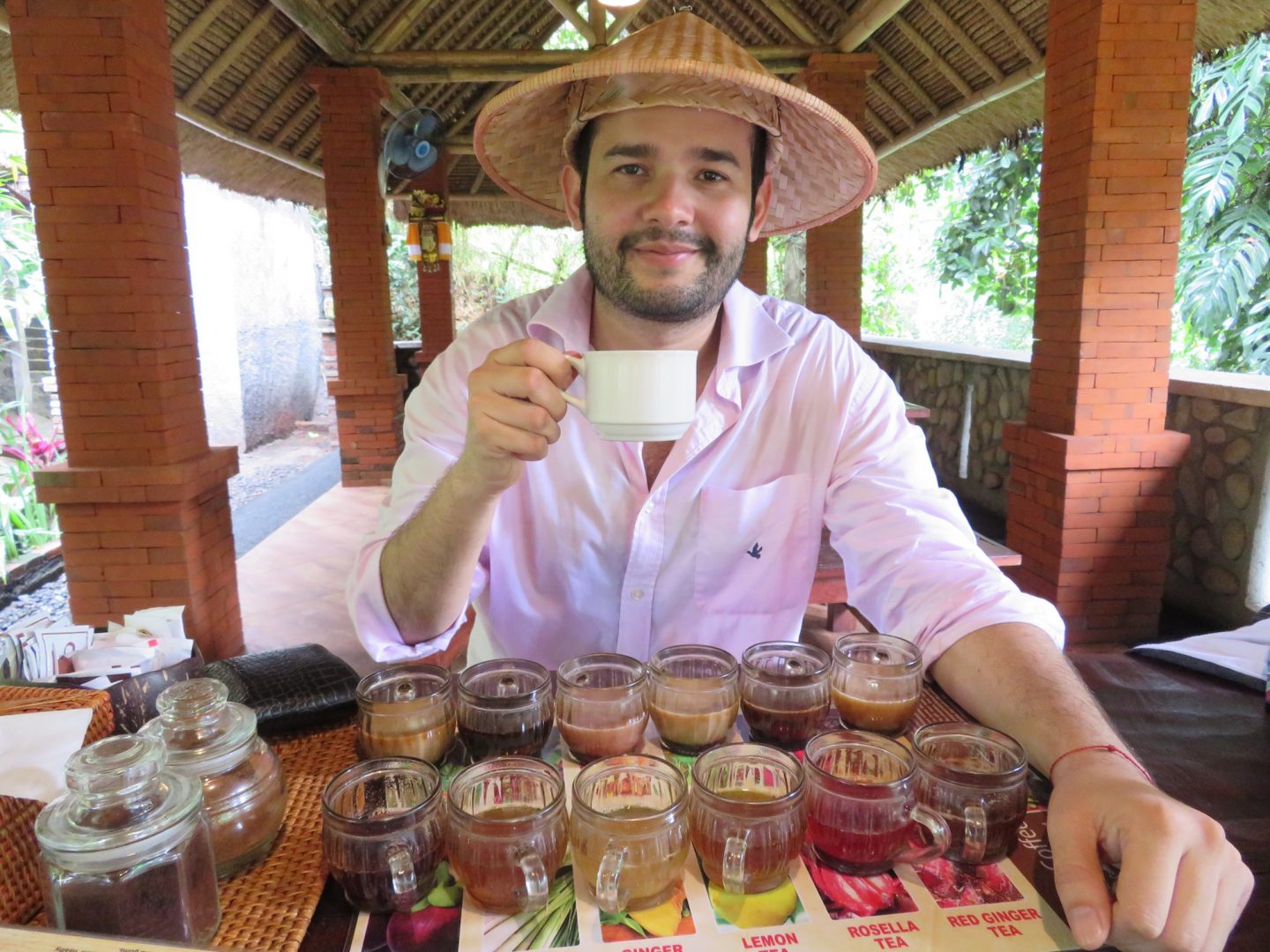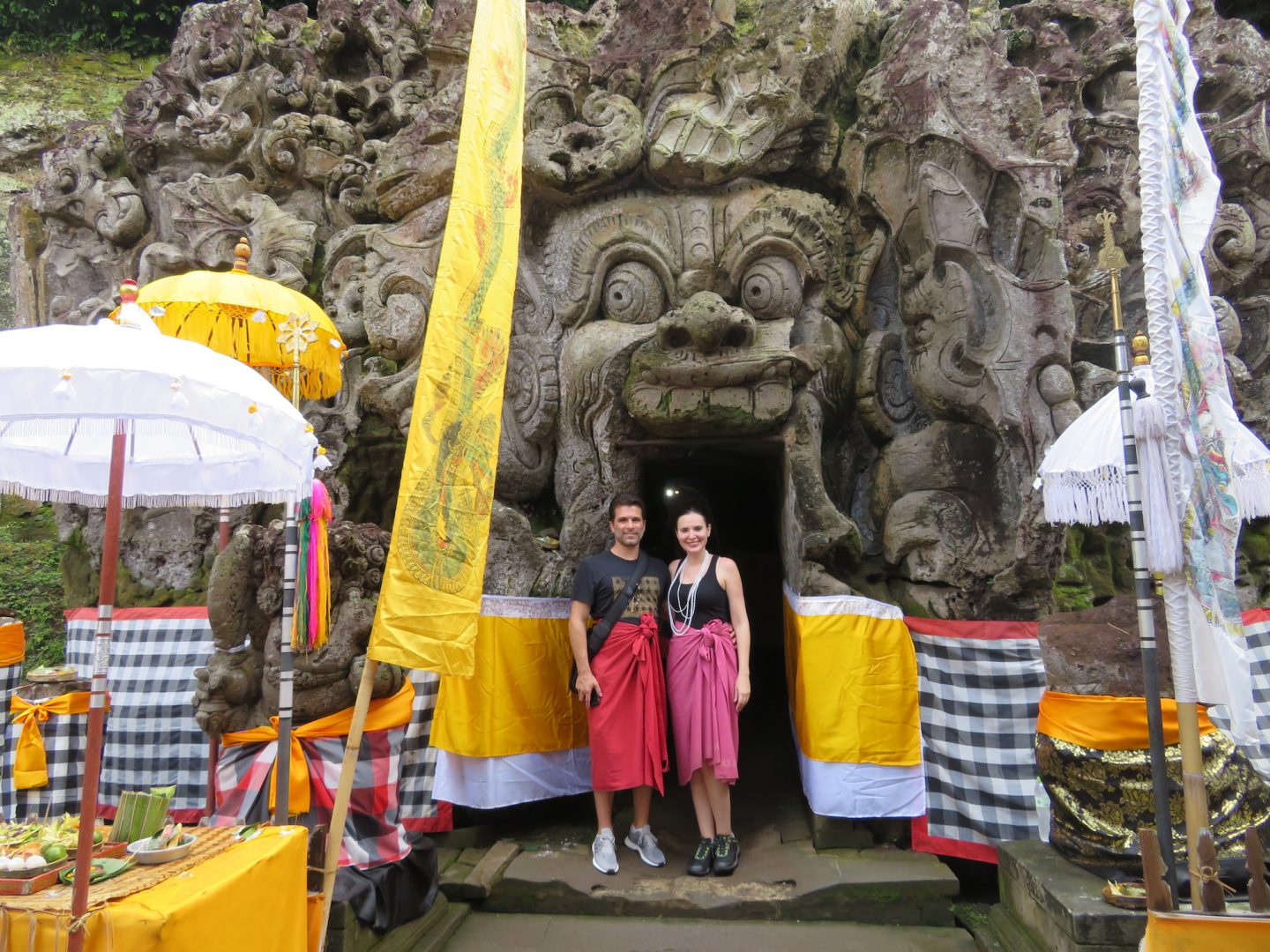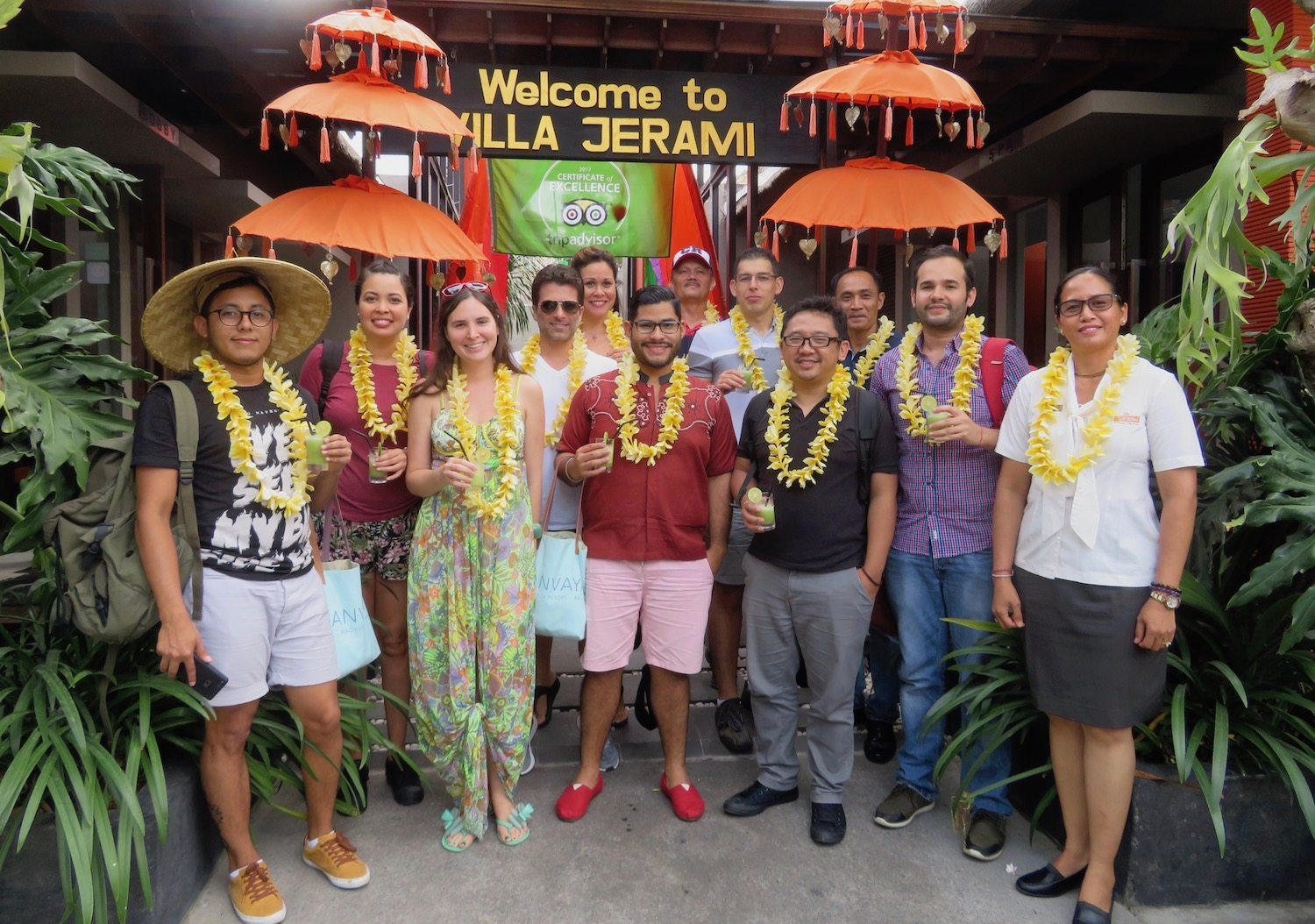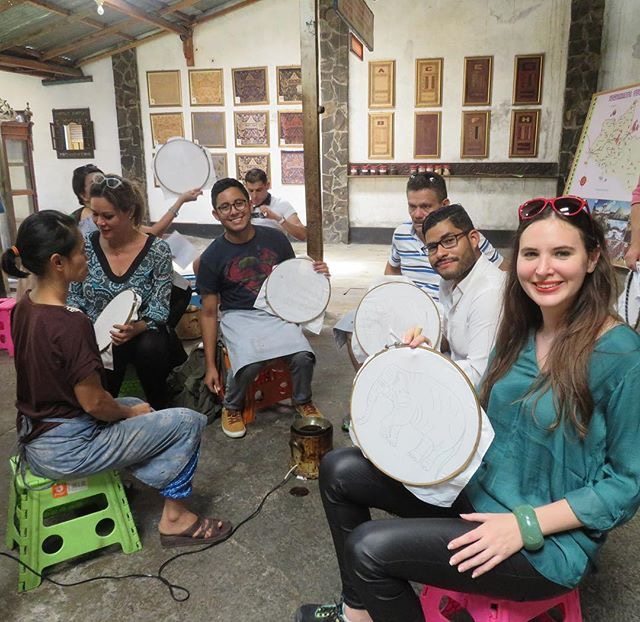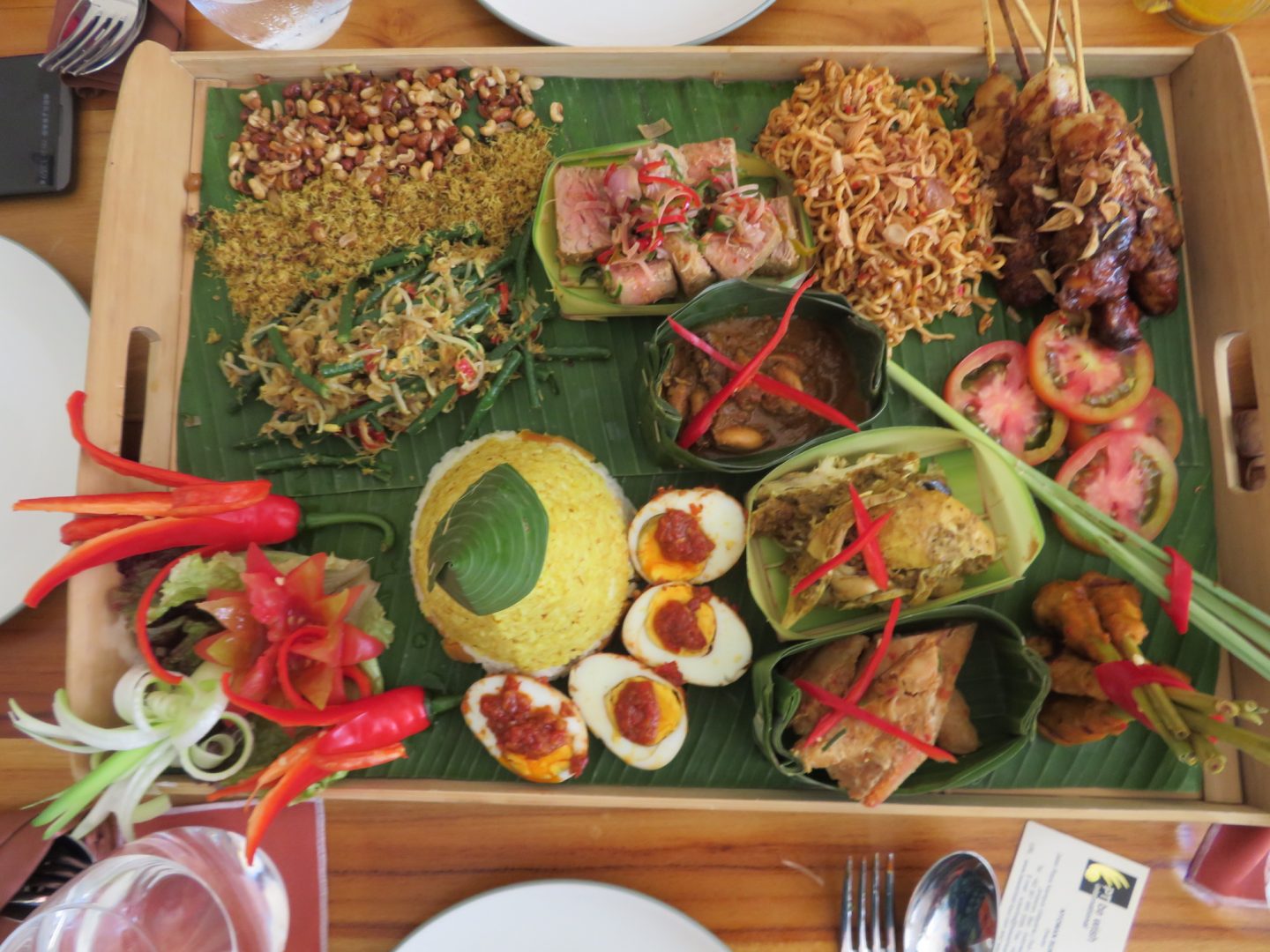If you stay in a hotel in Ubud, you should visit Goa Gajah which is located 6km from the center in a town called Bedulu. On the outside of the site there is a market with stalls for tourists. Local vendors harass you a bit to buy a sarong to cover your legs. They have very nice models that you can choose or you can rent one at the entrance.
A curious thing is that in all the temples in Bali women cannot enter if they are with their period, but the truth is that nobody asks. Goa Gajah Temple opens daily from 8 a.m. at 4 p.m.
Bathe with luck in the waters of Petanu
Just down the stairs you can see a great view of the temple and it is a place to take photos. Upon reaching the main area you can see two pools with little water. Each has 3 statues of women with large breasts covered with a white and yellow sarong. They have a container that drips water as a source. It is said that the statues are of Hindu angels.
This part of the temple in Ubud was discovered in 1954 when it was excavated and restored. If you visit you should get wet with a little water that they say brings good luck. The water is from the Petanu River. Goa Gajah was built on that site because it was a hill where two streams joined.
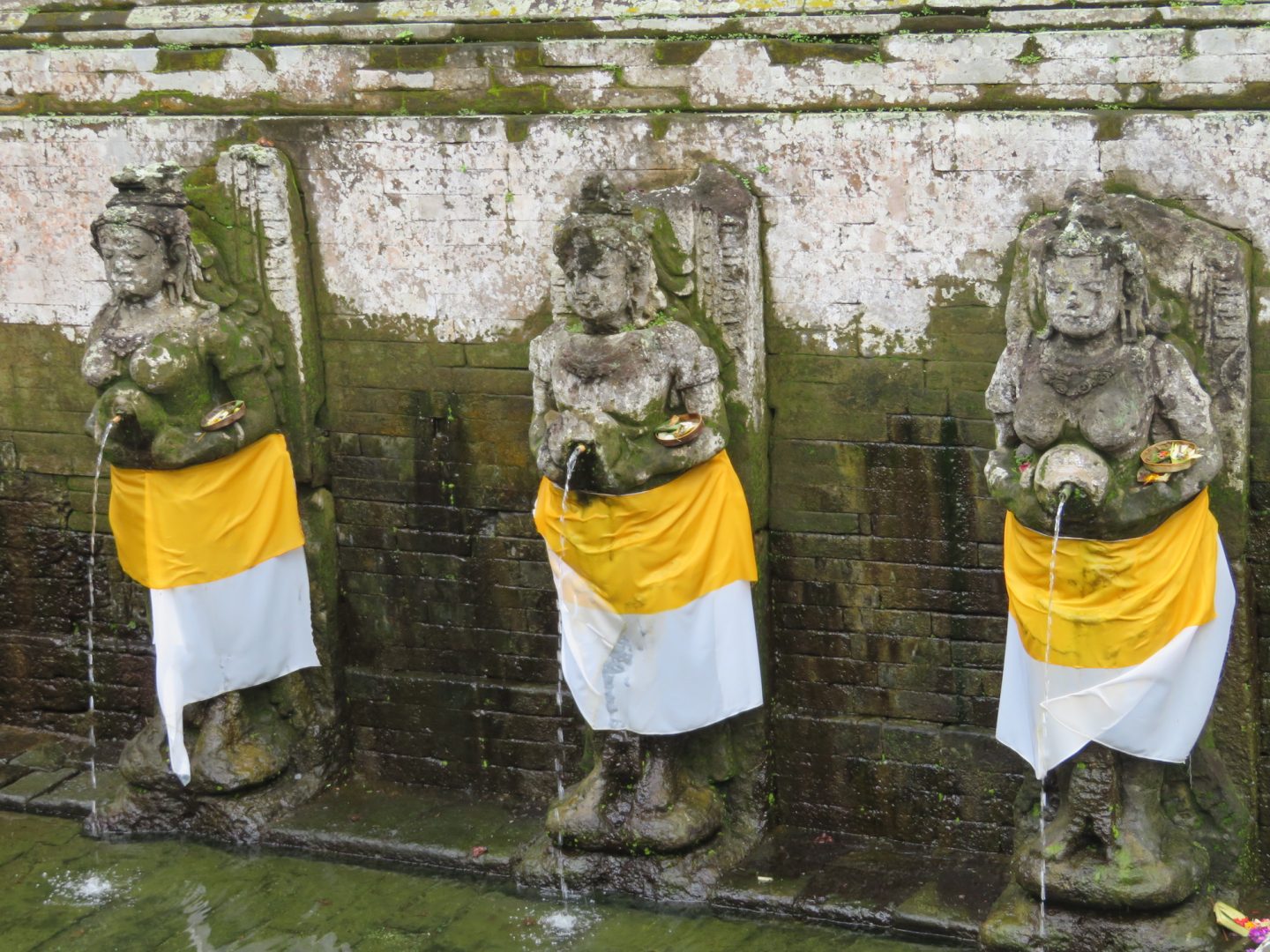
Why is Goa Gajah called the temple of the elephant?
The name is really curious since I didn’t see any elephants in the temple, just a statue outside that is probably from modern times. Some people say that it is because the name of the Petanu River that was previously called “Lea Gajah”. Others say that Gajah comes from the figure inside the cave that represents Ganesh, the Hindu God, usually interpreted by the head of an elephant.
The entrance to the cave has a face that is thought to be of an elephant. The truth is that it is a bit scary since it has creatures and demons. One enters through the mouth. You must be patient when entering as it is a place where many people stop to take a picture and you may have to line up.
A historic site according to UNESCO
Goa Gajah was added to the UNESCO World Heritage list in October 1995. It was built in the 9th century as a sanctuary for meditation. Some structures show Buddhist influences before the 8th century and Hindu from the 10th century.
On the inside of the cave there are three idols that are covered in cloth. The burning of incense through so many years managed to make the walls turn black. You can see where the monks sat to meditate because of the wear and tear of the floor.
The temple is still used and the day we went there were monks making prayers and offerings in front of the cave. I saw a man who could be almost 100 years old and I followed him across the temple by chance. He asked me if I wanted a picture and I gave him a tip that he asked for.
We went on a holiday and there were many people from the community. The men were in a house back making food, while the women made offerings. For that occasion everyone was dressed in luxuriously. People in Indonesia are super friendly and love to take pictures with tourists, so you can take advantage and take pictures with the locals.
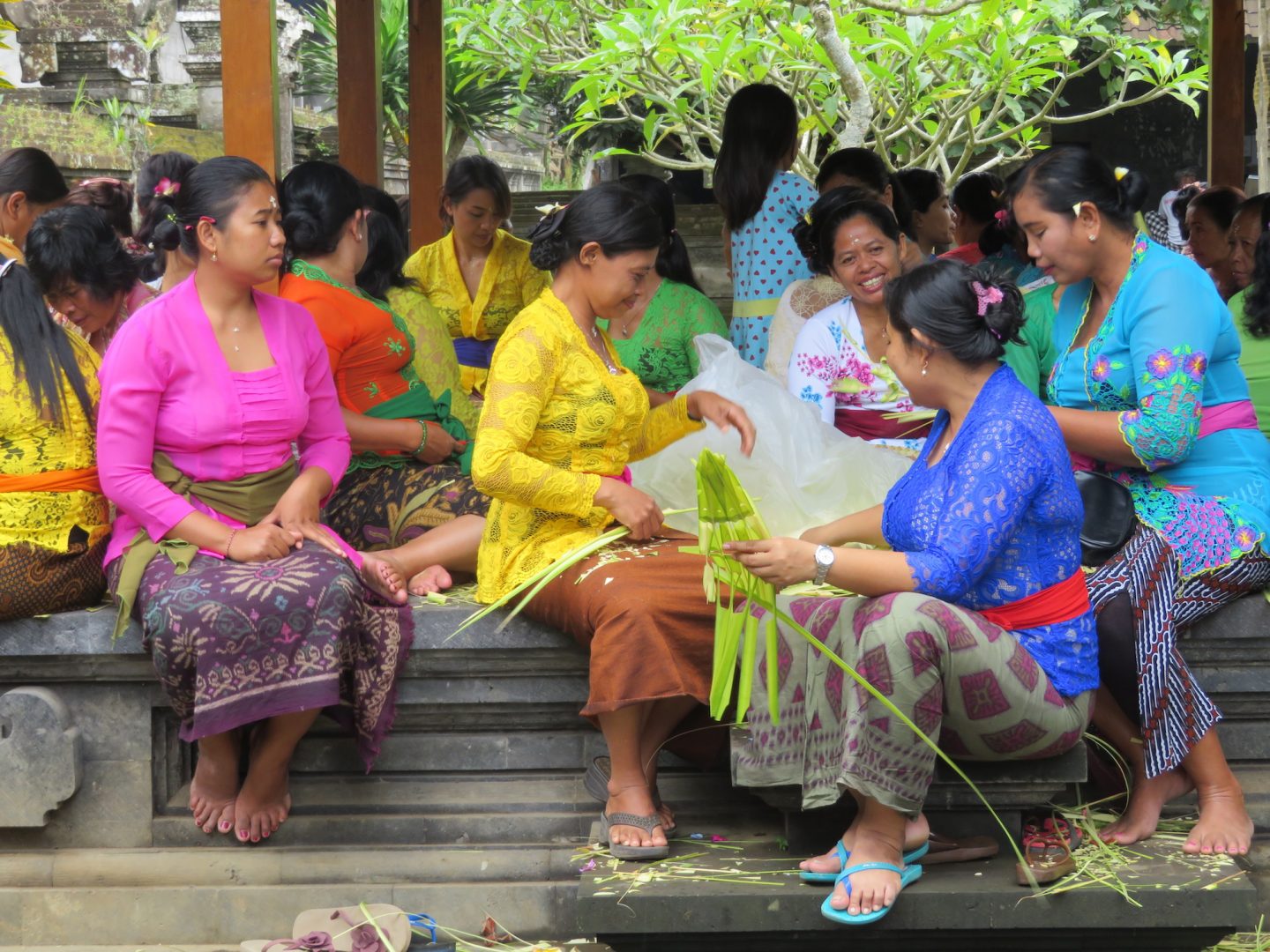
Meals, drinks and souvenirs
In Goa Gajah they sell beer. After going to so many Muslim sites on my trip to Asia, it was cool to go to a Buddhist site. Most people living in Bali are not Muslims, so it is more liberal. Of course, I took advantage and bought a Bintang, even though it was only 11 a.m.
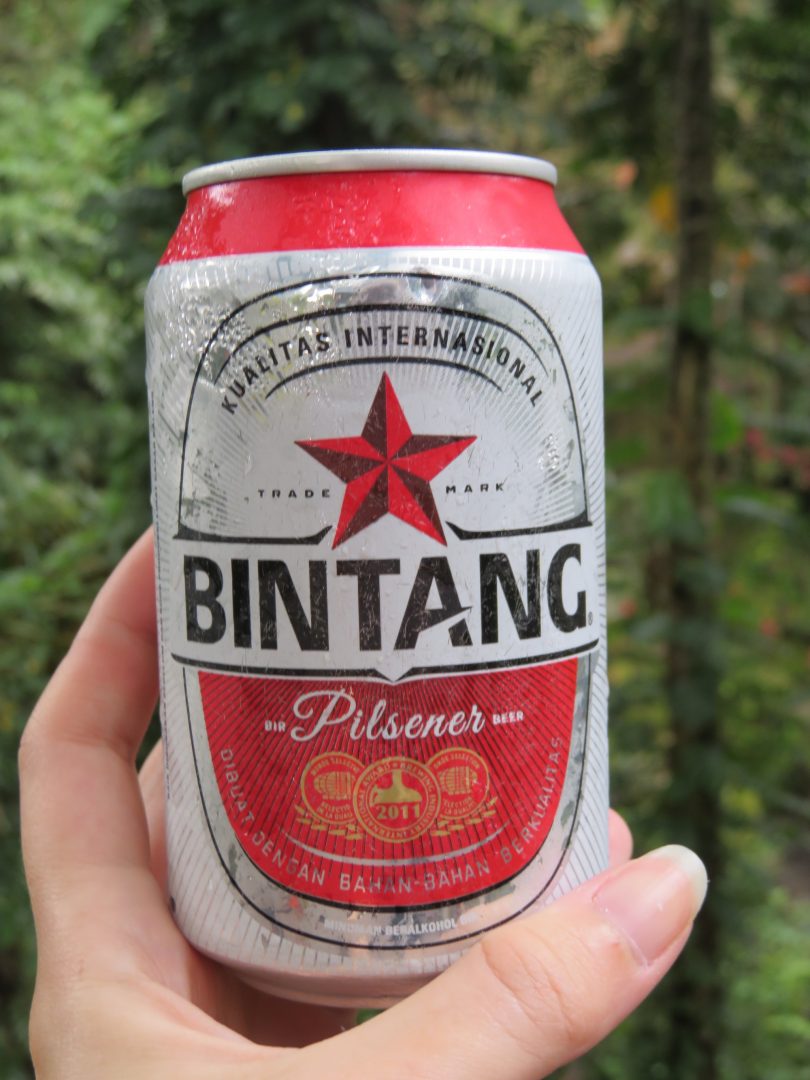
When I left where the buses are, I saw a place that sells the famous Kopi Luwak coffee. This coffee is one of the most expensive in the world and is made with partially digested cherries which are defecated by an animal. They had one in a cage, poor animal, for tourists to see. I didn’t feel so bad because all he did was sleep.
In that place they give you a tasting of teas and coffees. I tried some delicious and unique varieties such as mangosteen, lemongrass and rosella, which in my country is known as saril or Jamaica flower. You can buy the products too but they were already waiting for us on the bus and we had to run back.
